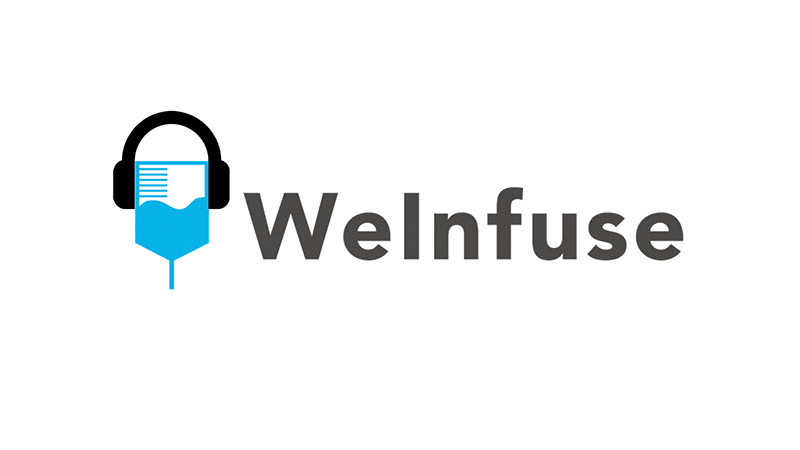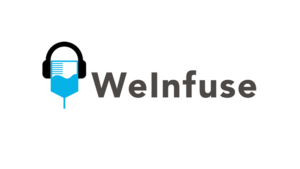In this episode, we talk with Brenda Matthews, Director of Infusion Strategy at Cencora. Brenda shares her journey into the infusion industry, insights from her deep background in patient safety, and her work helping infusion centers optimize operations with analytics, inventory management, and enterprise strategy. You’ll also hear about the exciting partnership between Cencora and WeInfuse—and Brenda’s top advice for infusion providers looking to strengthen their safety practices.
Amanda Brummitt: WeInfuse Podcast Episode number 73. Welcome to the WeInfuse Podcast. My name is Amanda Brummitt. In every episode, we give you a seat at the table as we talk to infusion center owners, operators, and experts, so you can get the insight you need to run a thriving center. In this episode, we talk with Brenda Matthews, Director of Infusion Strategy at Cencora. Brenda shares her unique journey into infusion insights from her deep background in patient safety and quality & her work helping infusion centers optimize operations with analytics, inventory management, and enterprise strategy. You’ll also hear about the exciting partnership between Cencora and WeInfuse, and Brenda’s top advice for infusion providers looking to strengthen their safety practices.
So Brenda, thank you so much for carving time out of your busy day to come and share your insights with us. Can you start by just telling us about your background? Who are you?
Brenda Matthews: Yeah, absolutely. It’s a pleasure to be here today. I’m very excited to join you. A little bit about my background, so I am a pharmacist by training. I’ve been in the pharmacy world for a little over 20 years now, and I have experiences with pharmacy, clinical operations, and quality assurance primarily.
I currently serve as the Director of Infusion Strategy with Cencora, where I lead a team to implement our home infusion & ambulatory infusion consulting services. Prior to this role, I’ve held multiple other leadership positions nationally with large organizations, including Director of Clinical Services and Director of Quality and Patient Safety.
Ultimately, throughout my career, I’ve managed retail, pharmacy, sterile, non-sterile compounding pharmacies, infusion pharmacies, as well as infusion suites. I guess all those experiences have given me an opportunity to really play key roles in the infusion space with acquisitions, integrations, and leading fantastic cross-functional teams in really high complex, regulated markets where they have an opportunity to drive process innovation, safety, and quality.
Amanda Brummitt: Wow. You’ve done it all. How did you find yourself on the infusion side?
Brenda Matthews: Yeah. Honestly, I have to say that someone took a chance on me. I like to joke about this, but I definitely embraced the opportunity when it was presented to me, and I am sincerely grateful for the opportunity that I had and I carry it forward with purpose. I think at the time, my experience was really based in retail and sterile compounding at the time. But what they saw in me was the commitment that I had to patient care. I was determined to unravel the complexity of infusion therapy, which really has shown through in all the work that I’ve done over the past years.
Amanda Brummitt: Nice. And if you had one area of expertise, you’d pick out what, what do you think that is?
Brenda Matthews: I definitely would say quality and safety, but it’s kind of, it’s a big mash.
Expertise really lies in pulling all that together–Living somewhat in an intersection between operations, regulatory accreditation–a big mash there. But really within that home infusion space with specialty therapies is where I think my expertise lies.
Amanda Brummitt: And then I understand that you guys have a partnership with WeInfuse. Can you tell me about how that works?
Brenda Matthews: Yeah, absolutely. As I mentioned earlier, Concora’s infusion consulting solution provides an end-to-end solution for health systems who are looking to expand or optimize their service offerings in the infusion space. Within that, the solution is really designed to complement whatever hospital system, their outpatient departments that they already have in place, or maybe even provider-led AICs.
As part of this offering. You know, getting back to your question, we have partnered with WeInfuse to deliver industry leading cloud-based infusion management software. The health systems have an ability to leverage the WeInfuse platform to enhance their operational efficiency, leverage their clinical patient management tools, inventory tools and analytics, to ultimately provide focus on their infusion performance.
Amanda Brummitt: Wow, that sounds like a really strong partnership in bringing together those two sets of brain trust must be really powerful.
Brenda Matthews: Absolutely. And it’s a continued work, right? Over time it will continue to evolve as the infusion landscape evolves.
Amanda Brummitt: Yeah, definitely. So your background in patient safety is really deep, and you give infusion center owners and operators a few pearls of wisdom in.
Brenda Matthews: Absolutely. I’d like to say in the context of infusion therapy, especially within home or ambulatory settings, safety is very important. It’s paramount due to the complexity of the medications that are being administered, the delivery methods of how it’s going as well as the patient’s condition in itself. So, with all that being said, I like to say, let’s keep it simple. I’m very simple when it comes to these things. We have to do what’s right even when no one’s looking. We always gotta stay focused on the basics. Live by, you know, five or six rights, whatever you believe in. I’m a fan of the six rights. We need to always verify that our patients, you know that we have the right patient, the right drug, the right dose. We’re administering it at the right time, right? And then we’re documenting all of it. I mean, they are principles that are the foundation of medication administration and medication safety. In addition to that, I am a big fan of engaging patients.
Part of the whole idea within the home-based setting is really about encouraging patients and their caregivers to be involved in that care–advocate for themselves, understand what their treatments are, and why they’re getting them. I think last but not least, stemming from a safety piece, I would be remiss if I didn’t say something about the culture.
So my biggest parallel of wisdom is really about believing in the culture of safety, right? Believing in a just culture where we’re open, we talk about errors when they happen, we talk about near misses, and we work towards an environment where we are always proactively identifying mitigating risks. Ultimately, you get towards zero harm. At the end of the day, we gotta do what’s best for the patient and within teams with our colleagues. We ultimately have to do what’s best for both.
Amanda Brummitt: I hear you say the word zero harm and I think back to 2001 when the “To Err is Human” report came out and I’m like we’re still talking about this over 20 years later! But I feel like with people with your passion, we’re gonna get there one of these days.
Brenda Matthews: We always have to stay focused on it, for sure.
Amanda Brummitt: Yeah, and I really appreciate your take on including the patient in the care. I do think that there can be a lot of unnecessary noise added to the interaction, because we like to tell stories and we like to share things that aren’t relevant, but those patients and their family members, they know what they’re allergic to and they can tell you an anecdotal something that you’re like, whoa, this is really important. And so I appreciate your approach on that, especially in that home setting where you’re sitting there with the patient for an hour and a half, like get really good information.
Brenda Matthews: Sometimes listening is the most important piece of what you can do in a day.
Amanda Brummitt: Absolutely. So Brenda, what would you say is the biggest challenge that you see infusion providers facing?
Brenda Matthews: Yeah, from my perspective, I think the biggest challenge that I have seen firsthand from multiple different lenses, whether it be in private infusion or large national infusion providers or health systems, is really the evolving dynamic that we see in regards to site of care and the reimbursement strategies that are influencing those changes inside of care.
I mean, I think back when we went through the COVID pandemic, it really taught us valuable lessons. We clearly saw that there were a number of therapies, particularly in lower acuity treatments, that could be safely and effectively administered in a home or in ambulatory setting, and patients really benefited from this model due to the access–The convenience of it, the comfort of care in the environment that they chose versus perhaps a traditional hospital setting.
Amanda Brummitt: That’s been huge for patients and providers.
Brenda Matthews: Absolutely, and I think despite the challenges that were there and despite the challenges we still face, we encounter that those site of care policies oftentimes don’t necessarily always reflect clinical reality or what the patient needs.
Amanda Brummitt: Brenda, that’s a really good point. Is there an example that you could give us for that?
Brenda Matthews: Yeah, absolutely. I had an opportunity to collaborate directly with a national payer to evaluate their segment or a segment of their site of care program. Really reviewing clinical data, making recommendations for how it could evolve to better align with patient’s care and needs in the IG spectrum. You know, that’s one of the things that I had focused on and evaluated based on clinical evidence as well. And part of our findings through that work that we did there was really what many of us in the industry already know–with proper assessment, the right patients can receive care in the home or in an AIS setting without defaulting to restrictive policies that mandate perhaps that first, second, or even a full-treatment, you know, in a hospital-based or facility-based setting, and this approach, it really frees up space for patients and the therapies where it’s truly needed to be in the hospital-based setting.
Amanda Brummitt: Yeah, that makes a lot of sense.
Brenda Matthews: Yeah, I mean, as clinicians, I think we’ve spent many years developing expertise to determine when it’s safe and it’s crucial just for us to recognize that there’s never gonna be a one size fits all model, especially within home infusion. But I do think that we can lean into the knowledge that we have and we can continue to advocate for patient-centered models where we prioritize clinical appropriateness over perhaps a blanket policy. It helps address the issues and unlock efficient, accessible care for patients.
Amanda Brummitt: Ah, finding that intersection of what’s safest for the patient, most comfortable for the patient, and makes sense for the providers.
Brenda Matthews: Yep, absolutely. I mean, it’s a challenge, but it is possible.
Amanda Brummitt: Right. Sounds like you’re up for challenges.
Brenda Matthews: I am for sure!
Amanda Brummitt: Well, what has been sort of your biggest challenge or light bulb moment that you’ve seen that really affects people delivering infusion safely?
Brenda Matthews: Yeah, I think I sort of related to what we were just describing. As the infusible drug market continues to expand and payers are working through those site of care shifts to lower the cost setting from that hospital outpatient department to perhaps an ambulatory setting.
I think many healthcare systems, though, are uniquely positioned to reshape the landscape. Having an HOPD, an AIC or AIS, and home services, it really becomes an ultimate patient-centered option, right? And I think that this light bulb for me didn’t go on until just recently as I was looking at the value of keeping a patient within a health system.
It enables us to leverage the more cost-effective model, but also be able to select a site that’s most appropriate for the patient. And that strategy in itself really becomes a catalyst for continuity of care, lower costs, enhancing patient satisfaction, and at the end of the day, it’s that patient.
It’s all about the patient who matters most.
Amanda Brummitt: Brenda, what are you most excited about right now in the infusion industry?
Brenda Matthews: I have to say that I’m excited that there’s gonna be a ton of growth, but within that growth, I’m really excited about the work that NHIA is doing to help support and advocate for patients and comprehensive coverage. You know, really working towards closing gaps with Medicare. You know, proposing new legislation that helps us serve those patients is really something that’s exciting to me. I’m particularly excited on the backend of that is that as we see more patients shift, you know, thinking about the data that’s associated with that and what will emerge from that and these efforts is amazing to me.
I can only imagine what we’re gonna see with changes in length of fewer infections, fewer readmissions. When we look at the successful shift of those patients into the home or ambulatory infusion center, and honestly, it’s gonna pave the way for more therapies–More growth over time, especially as the market continues to change.
Amanda Brummitt: That is exciting. I’d never thought about it through the lens of Medicare like that. That could be a huge game changer. Well, Brenda, if you had one last piece of advice to give our listeners, what would it be?
Brenda Matthews: Honestly, for me, I think it would be, don’t be afraid to try something new as, as our landscape in infusion changes and evolves over time.
I think it’s the perfect time to get involved, to be innovative, and to kind of shape the future of where infusion therapy goes. Like I said, we have an aging population that’s amongst us, right? And then we also have this expanding drug pipeline where we’re taking therapies that perhaps were infusible only and maybe are injectable now, and/or new biosimilars, new other options that are in the pipeline for infused therapies. As that continues to grow, I really think that if you’re excited, and you haven’t, you have just a little bit of something pushing you towards infusion. Don’t be afraid to get involved. It’s a great time and it’s a great time to shape the future.
Amanda Brummitt: Oh, that’s fantastic advice. Well, Brenda, I have to say you clearly are wildly intelligent around this realm, extremely passionate, but you’re also really positive about it. And there’s a lot of things that we do in this industry every day that’s hard. It’s, you know, safety’s hard, quality’s hard, navigating payment is hard, and you just take such a positive approach to it. So thank you for that and thank you for your time & everything you’ve done for the industry.
Brenda Brummitt: Thank you. I appreciate that compliment. I mean, honestly, you can’t go at it like that, right? You’re gonna drown if you do. I try to always look for that positive in everything.
Hey, look where it’s not positive, where it doesn’t work today, how do we make it better? How do we shape this? And it’s just, that’s the way I live, so we can’t get bogged down by the negativity. That’s for sure.
Amanda Brummitt: Wow. Brenda really brought an inspiring mix of clinical expertise and operational insight to this conversation, all grounded in her deep commitment to safety, quality, and patient-centered care.
Her practical wisdom, like keeping it simple, listening to patients and doing the right thing even when no one’s watching. Really stuck with this. As she says, zero harm isn’t a goal, it’s a daily commitment. If you haven’t explored WeInfuse and RxToolKit, schedule a test drive, and ask about the Cencora integration.
I’m Amanda Brummitt. We’ll see you next time.
Guest Speakers:
Brenda Matthews, Director of Infusion Strategy at Cencora.




